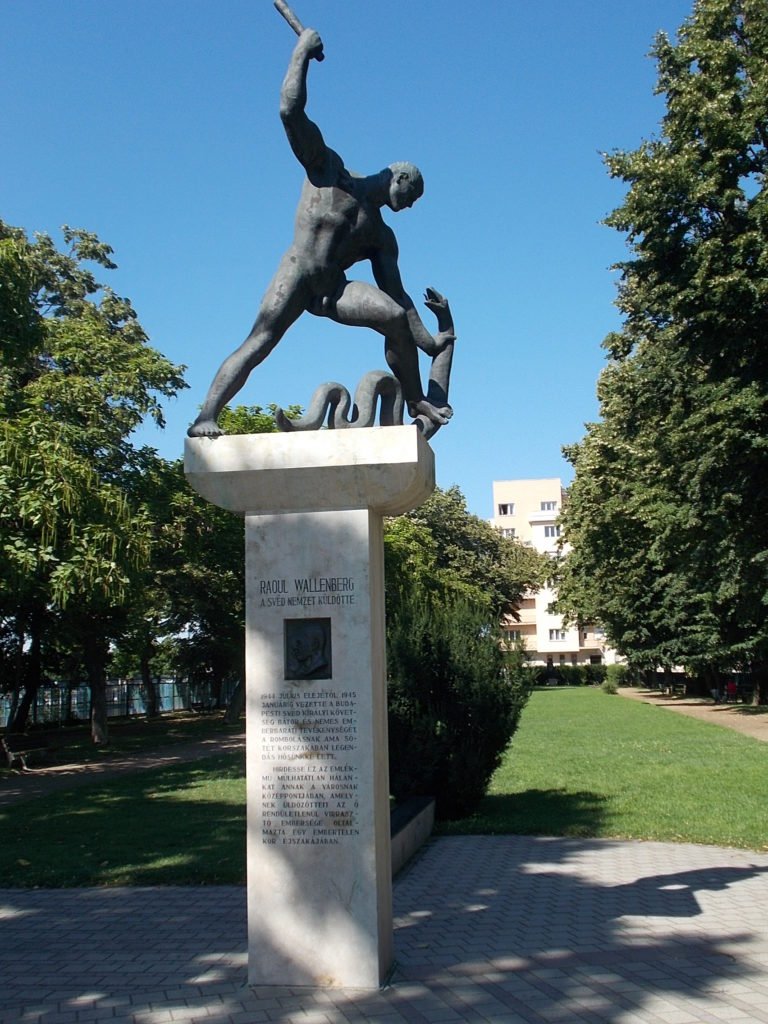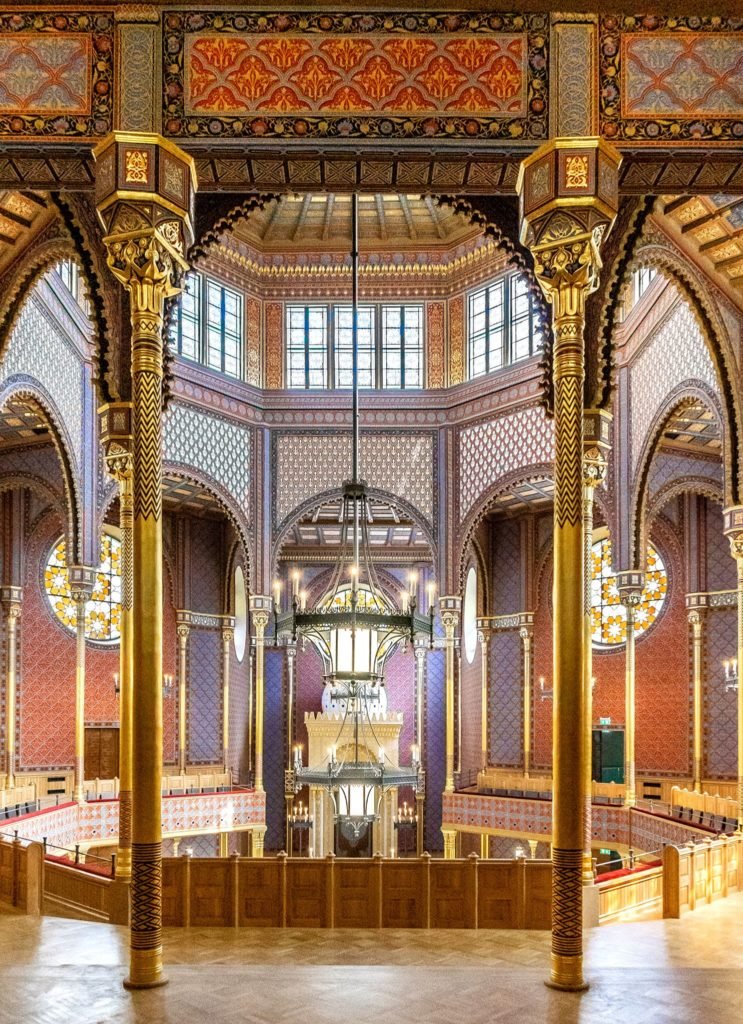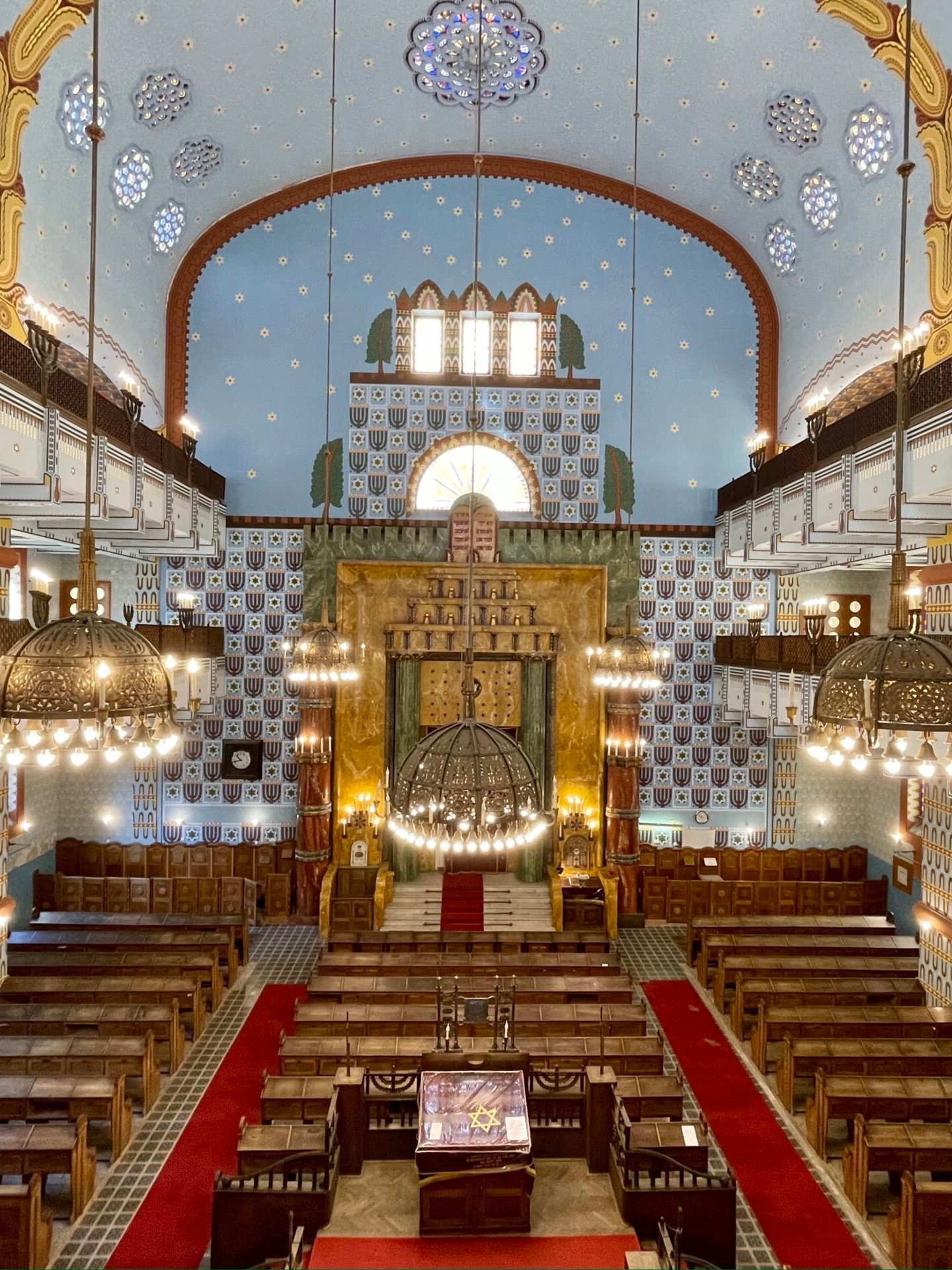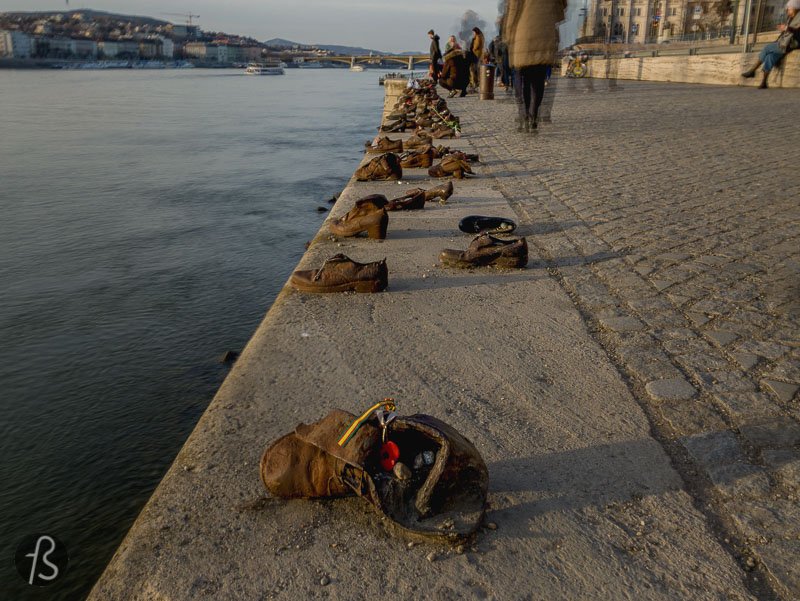Walk in the ‘Old’ Jewish quarter
It is hard to think of a place in Budapest that is developing faster than the 7th district that is best known in recent times as ‘the old’ Jewish quarter. Budapest has traditionally had a large Jewish community. Since the 19th century, Jews were allowed to settle in the seventh district, the Erzsébetváros in Pest. This has resulted in 3 synagogues being built here, including the once largest in the world, the Dohány Synagogue.
In 1944 the district was declared a ghetto and the Jewish people were separated from the other people, many were deported and killed. Even before that time, but even more so after World War II, many Jewish families, mainly wealthy families, left the neighbourhood for better places. Yet this community has left its mark in the district and elsewhere in the Hungarian capital. Fortunately, there is still a Jewish community in Hungary that today numbers about 100,000 members.

The Great Dohány Synagogue
The Great Dohány Synagogue dates from 1859, seats 3000 visitors and is very distinctive for the two towers that complete the facade and entrance to the prayer house. Its size proves the importance of the Jews in the capital at that time, as well as their high-quality economic and cultural needs. The synagogue is the temple of the modernizing, so-called Neologist Judaism that is typical for Hungary.
The building is built in Moorish style. That alone makes it a fairly unique building in Budapest. The house where Theodor Herzl was born once stood next to the synagogue.
Did you know that he was the founder of Zionism that eventually led to the current Jewish state of Israel?
In addition to the striking Moorish appearance, the interior is also definitely worth a visit. The fact that there is also an organ makes the visit and the accompanying explanation remarkable.
The Raul Wallenberg Memorial Park
The Raul Wallenberg Memorial Park behind the large Dohány Synagogue has been dedicated since 1991 to Raoul Wallenberg, the Swedish diplomat during World War II in Budapest who tried to save as many lives as possible by giving security documents, letters of protection and passports. His mission was a great success, he saved thousands of lives and today he is the symbol of humanity and courage.
In the center of the park is a weeping willow made of iron, it is called The Tree Of Life and has 30000 leaves that remind us of the cca. Remembering 600,000 victims of the Hungarian Holocaust.
Not only Jews were murdered, but also gypsies, gays and others.
Most of the leaves are engraved with the names of the Hungarian victims.


The Rumbach Synagogue
Often incorrectly referred to as Status-Quo Synagogue.It dates from 1872 and like many other synagogues of that time, built in the so-called Moorish style, which resembles oriental architecture. This synagogue was commissioned by a modernizing, Neologue Jewish community but built according to the principles of traditional synagogue architecture. The dome of the prayer house is striking, which certainly has a special appearance on the inside.
The building was used by the community for religious purposes until World War II. As the blackest chapter in its history, the Hungarian authorities turned it into an internment camp in 1941. Jews without Hungarian citizenship were collected here before being deported. In 1944 the building became part of the Pest Ghetto.
After a complete renovation and restoration, the prayer house reopened as a community space for concerts, theater performances, and events and as an external exhibition space for the Jewish Museum and Archives. But also an active place of worship.
The Kazinczy Synagogue
Built in Art Nouveau style. One of the largest working Orthodox synagogues in Europe.In 1909, the Orthodox Judaism of Hungary announced a tender for the construction of a multi-purpose religious community complex, which, in addition to the main synagogue, also includes a schoolhouse, rabbinical apartment, school, headquarters, kitchen and canteen.
In 1913, during the autumn holidays, the synagogue was inaugurated. The school and headquarters were completed earlier.
The synagogue has more than 1,000 seats.
On the mural we find a wide range of decorative elements of Hungarian Art Nouveau, on the benches and bima we can find Transylvanian motifs on the carvings, while on the columns of the eastern wall we find inlays of Zsolnay porcelain with eosin glaze.
Walking in the Jewish quarter we will also pass the building of the mikveh and come to the Monument of Carl Lutz, the Swiss consul who during the war became known as “Hungary’s Schindler”.


Shoes on the Danube embankment
Holocaust memorial, chosen as the second best public sculpture in the world in 2016.One of the most impressive monuments are the sixty pairs of shoes, belonging to children, women, and men on the banks of the Danube. Many Jews died here. After they took off their shoes, they were shot dead, causing them to fall headfirst into the water. Sculptor Gyula Pauer and film director Can Togay developed and built the monument, and it is now a stark memento of a terrible time.